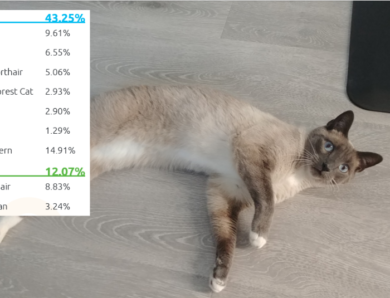Dr. Laura Cochrane is a true ailurophile.
From an early age, growing up with cats in an apartment in Virginia, Cochrane always felt a special connection to her feline companions. It was during these early days — and an apprenticeship with her local veterinarian — that an abiding fascination for cats took root and has never let go.
It’s steered much of the course of her life and ultimately led her to opening ROAR, a retail boutique (now online only) dedicated to improving the lives of cats by offering products that support their natural needs.
Cats are misunderstood, by almost everyone, Cochrane says. They’re not dogs, nor are they the sleep-all-day lumps of fur so many people assume them to be. Expecting them to act like dogs or sleep all day often leads to behavioral and physical problems that are easily avoidable.
With ROAR, Cochrane works to educate her customers on their cats’ biological needs: to scratch, to play, to eat differently.
Cats that are better understood, that lead enriched lives, are happier, healthier cats, she believes.
But Cochrane didn’t always understand this herself. A veterinarian by training, she never received any education on what makes cats different. Nor what behavioral problems (in cats or dogs) means.
She had to find her way to enlightenment. Her journey had more twists and turns than she would have expected as a 14-year-old spending her summer vacations at her local vet’s observing.
Veterinary School or Bust
Nowadays animal lovers have all kinds of choices when it comes to creating a career around their passion. Pet sitting, dog walking, pet behavior consulting, running a pet boutique, designing pet accessories and toys … the options are endless.
But back in the 80s if you wanted a career working with animals you became a vet. And from the time she was a tween that’s all Cochrane imagined for herself. It was “the prize” she kept her sights on and worked singularly toward.
By the time she was in middle school, she was spending her school holidays at the local vet observing. By high school, she was working there. And by her early 20s she had graduated from the Virginia-Maryland College of Veterinary Medicine.
Pull of the Cats

After vet school, Cochrane worked at various private practices for three years. Though they were mostly full-service (dogs, cats, small animals), she found herself gravitating more toward working with the cats.
It wasn’t just that she felt a connection with cats. The more time she spent with other vets, the more she realized many weren’t particularly good with cats.
Some are actually afraid of cats, she says, which can lead to an equally traumatic visit for the vet as well as the cat. For example, a frightened vet will often label a scared cat as aggressive if it hisses, resulting in the vet using unnecessary force, muzzling the cat, or even giving it sedation.
But Cochrane was good with cats, better than she was with dogs. And eventually, cats became her specialty.
Private Practice Disillusion
Despite finding her niche during her time in private practice, Cochrane was never quite happy.
Being a vet is a difficult and emotionally draining profession, made worse when making money takes priority over pet care.
A perfect example? Declawing. During her time in private practices, declawing was a regular practice. If a client wanted their cat declawed the answer was simply yes. No attempt at education. No questions about the client’s current nail care routine to see if there was another solution to whatever problem they were trying to fix. It was frustrating and upsetting for Cochrane.
But her frustration didn’t stop at declawing. Like with human medical care, profits at many veterinary practices depend on getting through as many appointments in a day as possible. Thirty minutes was the maximum Cochrane was permitted to allot to a patient — and that was stretching it; 15 to 20 minutes was much preferred.
But Cochrane doesn’t like being rushed. For her, good pet care is as dependent on education and helping pet parents understand their pets as it is on the veterinary care provided.
Ultimately, she left private practice because the emotional toll was too heavy.
Unable to separate herself from the bad days at work, Cochrane yearned for a way to make a more immediate impact on the lives of the animals she worked with.

Revamping L.A. Shelter Life?
Never one to take the easy road, Cochrane went from frying pan to fire when the municipal Los Angeles shelter system brought her onboard to revamp its policies.
In 2005, the shelter was a high-kill organization, especially for cats. But Cochrane’s attempts to change the system were met with resistance.
In particular, cats that came into the shelter with any type of upper respiratory illness were often euthanized immediately. Cochrane tried to change that. All she got for her efforts was heartache. She didn’t last long, six months to be exact.
Desperate to make an immediate impact, Cochrane began doing spay/neuter surgeries for small rescue groups. Most of it was for TNR (trap/neuter/release), and for a while, it satisfied her need to be actively helping. But, as Cochrane admits, she is not a fast surgeon. She could not keep up with the pace required.
Finding a Passion

Cochrane’s next step along her journey landed her at several mobile clinics in Los Angeles. The work had its ups and downs, but more importantly, her passion for educating pet parents, which had slowed her down all those years ago in private practice, could finally grow.
Working with mobile clinics took her throughout Los Angeles. Often to diverse communities, many of them lower-income where pet care was often out of their reach. Doing basic medical care wasn’t overly challenging, but meeting and connecting with people one-on-one was exactly what Cochrane had been missing.
She gained a reputation for carrying tote bags full of educational brochures. Whatever the question or concern, she had a brochure for it. For the first time, she was making a difference in the lives of the pets she treated and their parents.
Discovering an Entrepreneurial Spirit
While working with the mobile clinics, Cochrane began an in-house cat nail clipping service she called Dr. Kind Klaws. An educator at heart, the service was more than just a simple nail clipping.
By this time, L.A. had passed a ban on declawing, leaving many cat parents struggling with how to cope with their cat’s need to scratch. Cochrane spent time explaining the behavior and consulted with them on what products and activities they could introduce that would help alleviate any concerns.
Her work with Dr. Kind Klaws brought her to the attention of an organization called the Paw Project, which is dedicated to the eradication of the practice of declawing. When Cochrane and her partner moved to Portland, Oregon, the Paw Practice asked her to be their Oregon state director.
She spent the next several months lobbying in the state capital against a bill that would ban declawing. The ban had been purposely written with myriad loopholes making it impossible to enforce; it needed to be defeated.
Ultimately, she was successful. But though it was a good experience, Cochrane missed being on the front lines with pet parents: talking to them, educating them, helping them better understand their pets. She tried working at a few mobile clinics in Oregon, but the standard of care was too low for her to tolerate.
So when a retail space opened up close to where she lived, a long-talked about idea of opening a cat boutique finally clicked into place and ROAR was born.
Had you asked her 40 years ago — or even 10 years ago — if she could have imagined herself making a living as a cat boutique owner, Cochrane would have laughed. But really, it makes perfect sense.
From day one, Cochrane was on a journey. One that would bring her to a better understanding of cats and a passion for enriching their lives in a way that can only be achieved by educating the humans that love them.
You may also like: Jeweler Transforms Fallen Cat Whiskers Into Stunning Works of Art
1 Comment
Comments are closed.







Love this article. We have 9 cats that are all spayed or neutered and every one of them still has all their claws.
I have a feeling this journey is just beginning.